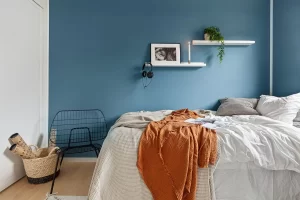Interior Design For Different Styles and Aesthetics

Interior design offers a vast array of styles and aesthetics to choose from, making it difficult to know which style is ideal for you. Before making any decisions about design direction, take time to truly consider how you want to live.
It’s essential to consider that the layout of your home affects its design quality. Interior design professionals take into account the layout of your space in order to guarantee it meets all of your needs and goals.
Modern
Interior design can take many different forms. Some people enjoy mixing elements from different styles together for a truly individual aesthetic.
The modern trend is defined by clean lines and open floorplans, coupled with materials like metal or glass that reflect light.
The Bauhaus style is a timeless example of contemporary interior design. This German-born movement emphasizes simplicity with functionality, as well as an appreciation of biological science.
Traditional
Traditional interior design is an ageless aesthetic that exudes elegance and coziness. Drawing inspiration from 18th and 19th-century European art pieces, it appeals to those who value antiques, classic art pieces, symmetry, and designs with a rich cultural heritage.
Though this methodical aesthetic can seem repetitive and formal, its purpose is to create an atmosphere of calmness and serenity. Symmetry plays an integral role in traditional design for this reason.
Maximalism
Maximalism is an aesthetic of excess, celebrating patterns and colors, busy spaces, and plenty of variety. At its core, this trend encourages you to create a home that reflects your individual taste and style.
Adopting this aesthetic in a small space without creating chaos can be challenging, but it’s essential to layer on items that inspire you and bring joy into your life.
Start by selecting one focal piece of furniture in a cheerful and vibrant color. Use that as the basis for adding layers of patterns and decor around it.
Industrial
Industrial interior design is a trendy style that blends contemporary elements with natural, raw materials. Its cool and minimalist aesthetic makes it suitable for homes as well as offices.
Reclaimed or recycled building materials like exposed rafters, pipes, brick, and visible ductwork give this look a deconstructed feel with plenty of room for customization.
Color palettes in industrial spaces tend to be cool and subdued – typically consisting of grays, blacks, and whites. Incorporating pops of color in key accents is also a great way to brighten up an industrial space.
Period
Periods in history have had their own distinct interior design styles and aesthetics, which were shaped by advances in technology, materials, and ways of living at that time.
The Tudor period in Britain is a classic example of this style, featuring dark oak paneling, luxurious velvet fabric and decorative tapestries.
Furniture was often luxurious and ornate – oak being the preferred material for tables, chairs and cabinets with intricately carved legs, banister posts and inlays. Heraldry was also prevalent at this time with royal and family coats of arms being embedded into furnishings.
Rustic
Rustic interior design is a relaxed and organic aesthetic that draws inspiration from natural materials like woods, stones and fabrics such as jute or burlap.
Rustic design elements can be an ideal complement to contemporary styles, as they emphasize warmth and coziness. A rustic color palette typically consists of neutral colors like whites, warm greys, and earth tones.
This rustic aesthetic is accented with wood beams, round logs and raw wood furniture. Additionally, it incorporates natural elements like pressed flowers, seashells and potted plants for an organic touch.
Global
Global interior design is an eclectic style that draws inspiration from traditional patterns around the world. When combined with luxurious materials and finishes, this combination can produce some truly remarkable outcomes.
Global style is ideal for those who draw inspiration from travel and history, as well as those who appreciate the rich culture of a particular region. This look can range from bold and bright to subtle and muted depending on where it originates from.
For an authentic aesthetic, incorporate pieces from cultures you are familiar with or that tell stories. Examples include woven rugs, tapestries and Native American prints.


